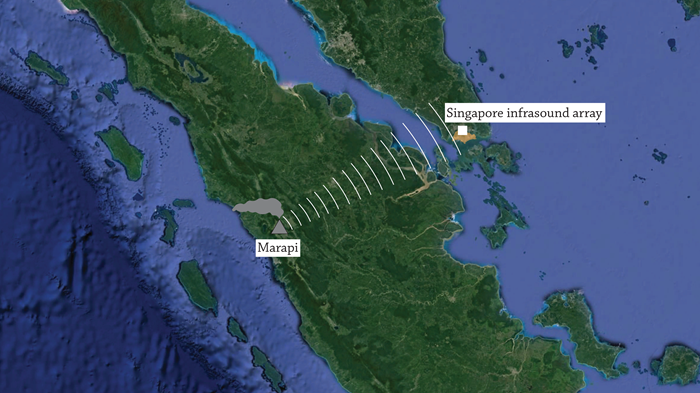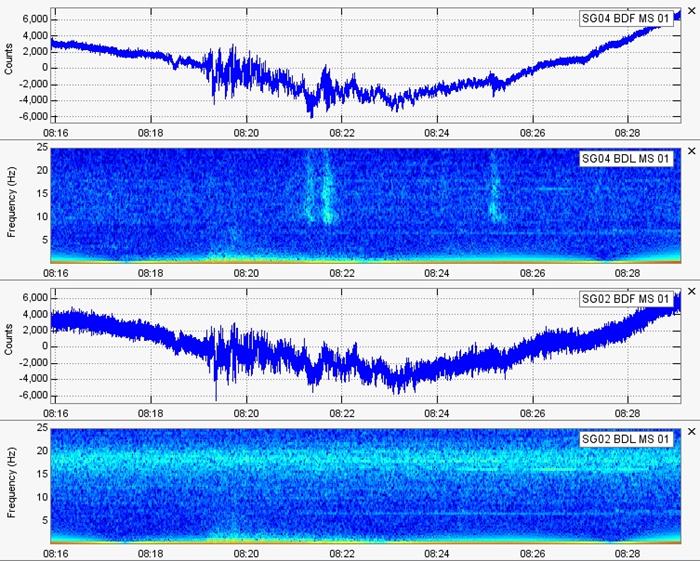Marapi volcano, the closest active volcano to Singapore, erupted on 3 December 2023 at around 4pm Singapore time. The eruption sent ash to the atmosphere and flows down the flanks of the volcano, claiming the lives of at least 22 people and blanketing nearby villages and towns with volcanic debris.
The Indonesian Centre for Volcanology and Geological Hazard Mitigation (CVGHM) observed ash to about 6 kilometres above sea level, and pyroclastic flows on the northwest flank of the volcano. Based on satellite imagery, the Darwin Volcanic Ash Advisory Centre reported ash at about 15 kilometres, and observed the volcanic plume drifting west of the volcano, away from Singapore. This eruption generated explosive signals that travelled to Singapore and were recorded by the Singapore infrasound array of the Earth Observatory of Singapore (EOS), located in MacRitchie Reservoir.

Marapi volcano, the closest active volcano to Singapore, generated infrasound signals during its December 2023 that were recorded in Singapore (Source: Earth Observatory of Singapore)
Marapi is located in Sumatra, Indonesia, about 400 kilometres from Singapore. Its 3 December 2023 eruption generated infrasound signals that travelled in the atmosphere at the speed of the sound. These signals, inaudible to humans, can be recorded by sensitive instruments called infrasound sensors. Such sensors are commonly used to detect volcanic eruptions from a safe distance.
Given sound waves travel at a speed of about 340 metres per second, it took about 19 minutes for the sound waves generated at the eruption site to reach Singapore. For example, the 3 December eruption was detected in Singapore at about 4:19pm the same day. Other infrasound stations located closer to the volcano and maintained by CVGHM and EOS recorded the eruptions as well.
The signals, after being processed by algorithms developed by the EOS Magma Transport Dynamics Team, estimated that the plume from the 3 December eruption reached an altitude of about 5 kilometres above the volcano. This estimate is consistent with observations from CVGHM.

The infrasound signals of Singapore stations detected the eruption at about 08:19am (UTC time), which is 4:19pm Singapore time. It took about 16 minutes for the signals to travel from the volcano to the Singapore stations (Source: EOS Magma Transport Dynamics Team/ Earth Observatory of Singapore)
Marapi is an active volcano that has erupted several times over the last decades. Prior to the December 2023 eruptions, Marapi last erupted in January-February 2023, but the eruption was smaller than the 3 December eruption.
At the time of writing this article, the volcanic alert level is at level II (Waspada): Advisory/Alert.
For official updates about the activity of Marapi volcano and all Indonesian volcanoes, please refer to information provided by the Centre for Volcanology and Geological Hazard Mitigation: https://magma.esdm.go.id/v1